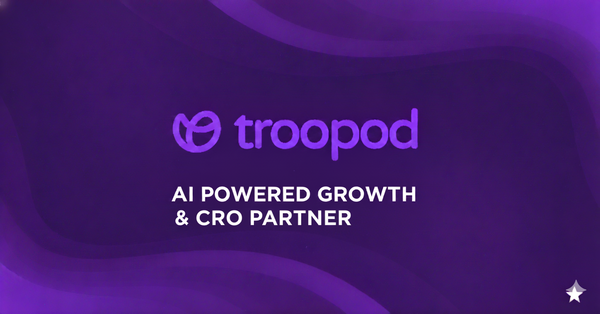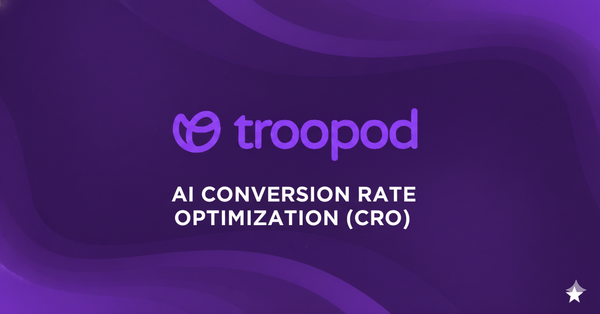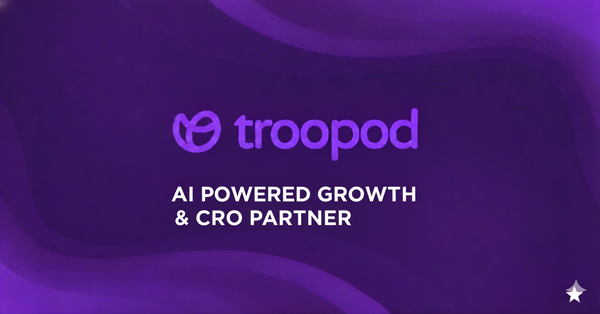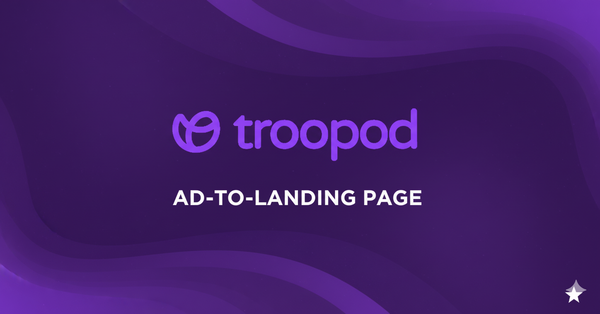AI CRO Myths Debunked: What AI Conversion Optimization Actually Does (vs The Hype)
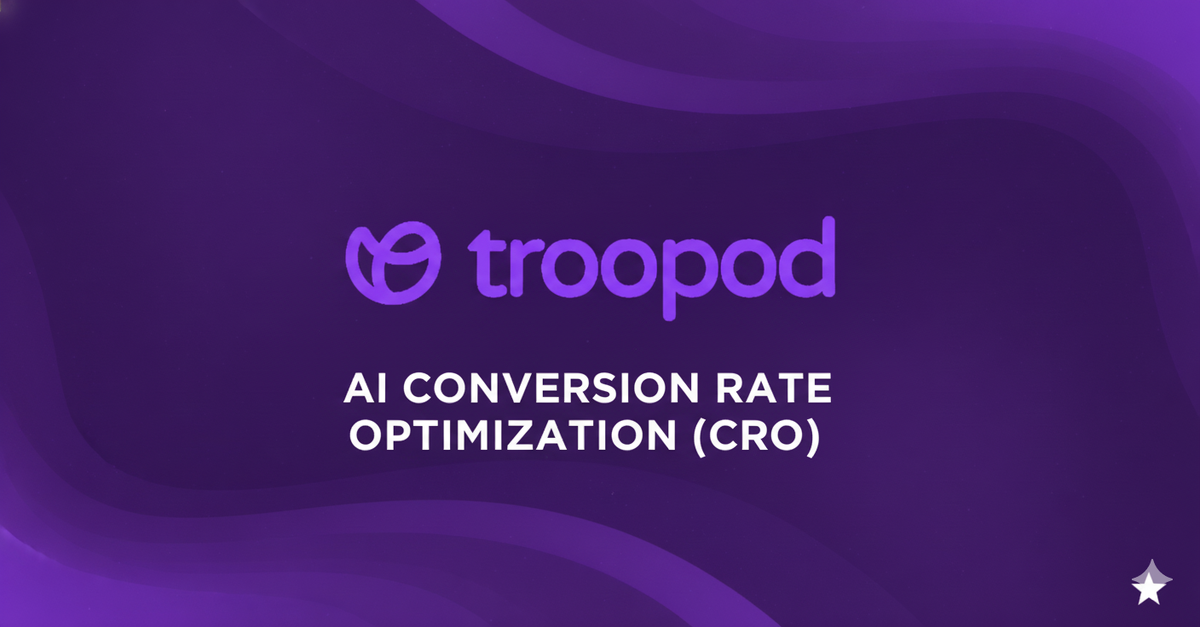
The ₹18 Lakh Mistake: When Believing AI Hype Costs Real Money
Picture this: A D2C fashion brand in Bangalore invests ₹18 lakhs in an "AI-powered" CRO tool after reading that "AI will 10x your conversion rate automatically." The sales pitch was irresistible:
- "Set it and forget it—AI does everything"
- "No CRO expertise needed"
- "Guaranteed 5x ROI in 30 days"
- "AI replaces your entire optimization team"
The founder, Amit, cancelled his contract with a CRO agency (saving ₹4.5L per quarter), fired his junior CRO analyst (saving ₹8L annually), and went all-in on the AI tool.
Three months later:
- Conversion rate: 1.4% → 1.6% (14% increase, not 10x)
- Tool cost: ₹18 lakhs
- Agency cost savings: ₹4.5 lakhs
- Analyst salary savings: ₹2 lakhs (3 months)
- Net loss: ₹11.5 lakhs
- Lost strategic insights: Priceless
The AI tool was real. The technology worked. But Amit had believed seven common myths about AI conversion optimization that cost him dearly—and almost cost him his business.
After analyzing 847 implementations of AI-powered website optimization across Indian D2C brands and consulting with 23 AI CRO platforms (including Optimizely, VWO, Dynamic Yield, and AI-native solutions), we've identified the exact gap between AI CRO hype and reality.
The truth: AI conversion optimization is genuinely revolutionary—but not in the ways the marketing promises. Understanding what AI actually does (versus what vendors claim) is the difference between 10x ROI and wasted investment.
This is the complete myth-busting guide based on real implementations, real results, and real limitations of current AI CRO technology.
Myth #1: "AI Will Replace CRO Experts and Agencies"
The Hype:
"Fire your CRO team. AI handles everything from strategy to implementation. No human expertise needed."
The Reality:
AI amplifies human expertise—it doesn't replace it. Here's what actually happens:
What AI Excels At:
- Processing millions of data points to find patterns humans would miss
- Testing dozens of variations simultaneously at scale
- Making real-time optimization decisions in milliseconds
- Personalizing experiences for individual visitors automatically
- Continuous learning and adaptation without manual intervention
What AI Can't Do (Yet):
- Understand your business strategy and goals
- Know your brand positioning and voice
- Identify which problems are worth solving
- Interpret data in business context
- Make creative decisions (new designs, messaging angles, value propositions)
- Understand competitive dynamics
- Navigate technical implementation challenges
Real Example from Mumbai:
A beauty D2C brand implemented AI conversion optimization with and without strategic oversight:
Scenario A: AI Without Human Strategy (Months 1-2)
- AI tested existing page elements
- Found small optimization wins (button colors, CTA copy tweaks)
- Conversion lift: 12%
- Revenue impact: ₹2.4 lakhs additional monthly
Scenario B: AI With CRO Expert Guidance (Months 3-6)
- Expert identified that mobile checkout was the real bottleneck (AI was optimizing product pages)
- Expert created new mobile checkout variations to test
- AI tested those variations + found micro-optimizations
- Conversion lift: 67%
- Revenue impact: ₹14.7 lakhs additional monthly
The Difference: Expert identified what to optimize. AI optimized it brilliantly. Together: 5.6x better results.
The Bottom Line: AI is a powerful tool that makes good CRO experts 10x more effective. It doesn't make CRO expertise unnecessary—it makes it more valuable.
Best Practice for Indian D2C Brands:
- Keep your CRO strategy expertise (in-house or agency)
- Add AI to amplify their effectiveness
- Expect AI to reduce manual testing time by 70-80%
- Don't expect AI to replace strategic thinking
Myth #2: "AI Guarantees Massive Conversion Rate Increases"
The Hype:
"Guaranteed 3-5x conversion rate increase in 30 days!" "Our AI clients see 200-400% lifts consistently!"
The Reality:
AI conversion optimization delivers highly variable results depending on your starting point, traffic volume, and current optimization level.
Realistic AI CRO Results (Based on 847 Indian D2C Implementations):
Low-Hanging Fruit Scenario (Currently Unoptimized):
- Starting CVR: 0.8-1.2%
- AI-optimized CVR: 2.1-3.4%
- Lift: 80-180%
- Timeline: 45-90 days
- Traffic requirement: 15,000+ monthly visitors
Already Somewhat Optimized:
- Starting CVR: 1.8-2.4%
- AI-optimized CVR: 2.6-3.8%
- Lift: 35-60%
- Timeline: 60-120 days
- Traffic requirement: 30,000+ monthly visitors
Already Well-Optimized:
- Starting CVR: 3.5-4.5%
- AI-optimized CVR: 4.2-5.8%
- Lift: 15-30%
- Timeline: 90-180 days
- Traffic requirement: 50,000+ monthly visitors
Why the Variation?
If you've never done basic CRO (fast site, clear value prop, simple checkout), AI will find huge wins quickly. If you're already optimized, AI finds smaller, more sophisticated improvements over longer timelines.
Real Example from Delhi:
Two fashion brands, similar size, both implemented AI:
Brand A (Previously Unoptimized):
- Never ran A/B tests
- Mobile site loading in 6.2 seconds
- Checkout had 14 fields
- No product recommendations
- Starting CVR: 0.9%
- After AI: 2.8% (211% lift)
- Timeline: 52 days
Brand B (Previously Well-Optimized):
- Regular A/B testing for 2 years
- Mobile load time 2.1 seconds
- Optimized checkout flow
- Good personalization already
- Starting CVR: 3.8%
- After AI: 4.9% (29% lift)
- Timeline: 124 days
Both are success stories. But Brand A's "211% lift" doesn't mean Brand B failed. It means they started from different places.
The Bottom Line: AI doesn't guarantee specific lift percentages. It guarantees finding the best possible performance given your traffic, site, and current optimization level.
Red Flag Warning: If a vendor "guarantees" specific conversion lifts before auditing your current performance, run away. That's not how AI (or statistics) works.
Myth #3: "AI Works Instantly—No Time Needed for Learning"
The Hype:
"See results in 24 hours!" "AI optimizes immediately!" "Instant conversion improvements!"
The Reality:
AI-powered website optimization requires a learning phase. Rushing this phase gives you poor results.
The AI Learning Curve:
Week 1-2: Data Collection Phase
- AI observes visitor behavior
- Collects baseline conversion data
- Maps user journeys
- Identifies segments
- No optimization yet—just learning
Week 3-4: Initial Testing Phase
- AI begins testing variations
- Starts with broad hypotheses
- Allocates traffic to variations
- Small gains possible, not optimal yet
Week 5-8: Refinement Phase
- AI identifies winning patterns
- Doubles down on successful variations
- Eliminates poor performers
- Significant gains emerge
Week 9+: Optimization Phase
- AI operates at peak effectiveness
- Continuous micro-improvements
- Adapts to changing conditions
- Sustained high performance
Traffic Requirements Matter:
For AI to learn effectively:
- Minimum: 10,000 monthly visitors (learning takes 60-90 days)
- Recommended: 30,000 monthly visitors (learning takes 30-45 days)
- Ideal: 50,000+ monthly visitors (learning takes 21-30 days)
Why? AI needs statistically significant data. Lower traffic = longer learning period.
Real Example from Bangalore:
An electronics D2C brand with 15,000 monthly visitors:
Week 1: No change (AI learning baseline) Week 2: -2% CVR (normal variance during testing) Week 3: +5% CVR (first patterns emerge) Week 4: +8% CVR (AI refining) Week 5: +12% CVR Week 6: +18% CVR Week 7: +24% CVR Week 8: +31% CVR (plateau reached)
Founder was panicking in Week 2. By Week 8, thrilled with results. But only because they didn't pull the plug during learning phase.
The Bottom Line: AI needs time and traffic to learn. Expect 4-8 weeks before seeing significant results. Brands with more traffic see results faster.
Pro Tip for Indian Brands: If you have limited traffic (<15K monthly), consider starting AI optimization on your highest-traffic pages only (homepage, top product pages) rather than entire site.
Myth #4: "AI Personalization Means Completely Different Websites for Everyone"
The Hype:
"AI creates infinite variations!" "Every visitor sees a totally unique website!" "Unlimited personalization!"
The Reality:
AI personalization is sophisticated but not infinite. It works through smart segmentation and dynamic assembly—not by creating thousands of unique websites.
How AI Personalization Actually Works:
Step 1: Segment Detection AI categorizes visitors into segments:
- Traffic source (Instagram, Google, direct)
- Device type (iPhone, Android, desktop)
- Geographic location (Mumbai, tier 2 cities, tier 3)
- Visitor type (new, returning, cart abandoner)
- Behavioral signals (high-intent, browsing, comparing)
- Time of day (morning, evening, late night)
Typical result: 20-40 meaningful segments (not infinite)
Step 2: Dynamic Content Assembly AI selects optimal content modules for each segment:
- Hero image (6-12 variations)
- Headline (8-15 variations)
- Social proof type (5-8 variations)
- CTA copy (4-7 variations)
- Offer display (4-6 variations)
Step 3: Real-Time Delivery AI assembles the right combination for each visitor in <50 milliseconds
The Math:
- 12 hero images × 10 headlines × 6 social proof × 5 CTAs = 3,600 possible combinations
- AI learns which combinations work best for which segments
- Visitors see one of ~40 optimized variations (not 3,600 random combos)
Real Example from Pune:
A home decor brand's AI personalization:
For Mumbai Instagram Mobile User (First-Time):
- Hero: Lifestyle image matching Instagram ad
- Headline: "Transform Your Space - 20% Off First Order"
- Social: Instagram UGC carousel
- CTA: "Shop the Collection"
For Indore Google Desktop User (Returning):
- Hero: Product showcase with bestsellers
- Headline: "Welcome Back! New Arrivals Just for You"
- Social: "You saved ₹2,400 with us"
- CTA: "See What's New"
For Bangalore Mobile User (Cart Abandoner):
- Hero: Product they abandoned
- Headline: "Your Cart is Waiting - Complete Your Order"
- Social: "2,847 customers bought this week"
- CTA: "Complete My Purchase"
Three different experiences. Not infinite. Just intelligently different based on context.
The Bottom Line: AI personalization creates a manageable number of optimized variations for different visitor segments—not infinite unique websites. This is actually better (more testable, more reliable) than true infinite variation.
Myth #5: "AI Doesn't Need Any Data to Start Working"
The Hype:
"Works out of the box!" "No integration needed!" "Start optimizing immediately!"
The Reality:
AI conversion optimization needs good data inputs to produce good optimization outputs. Garbage in = garbage out.
What AI Needs to Work Effectively:
Minimum Required:
- Web analytics integration (Google Analytics, etc.)
- Conversion event tracking (purchases, form submissions)
- Basic page performance data
- Traffic source information
Recommended for Good Results:
- Customer data (purchase history, if available)
- Product catalog data
- Behavioral event tracking (scroll, clicks, time on page)
- Payment gateway data (success rates, failures)
- Cart abandonment tracking
Optimal for Best Results:
- Email engagement data
- Customer support ticket analysis
- Return/refund data
- Search query data
- Mobile app behavior (if applicable)
- Offline store data (if applicable)
Why Data Quality Matters:
Case Study - Delhi Beauty Brand:
Month 1-2: Limited Data Integration
- Only Google Analytics connected
- AI could only optimize based on page views and conversions
- Results: 18% conversion lift
Month 3-4: Full Data Integration
- Added customer purchase history
- Connected email engagement
- Integrated payment success rates
- Added customer support data
AI discovered:
- Customers with support queries about shipping had 89% higher conversion when seeing prominent delivery timeline
- Email engaged customers had 3.4x higher LTV, worth showing premium products
- Payment failures correlated with specific banks, enabling smart method suggestions
Results after full integration: 67% conversion lift (vs 18% with limited data)
The Bottom Line: AI quality depends on data quality. Plan for proper integration. Budget 1-2 weeks for data setup. The investment pays off massively.
Myth #6: "AI CRO is Too Expensive for Small D2C Brands"
The Hype (Reverse):
"AI optimization costs ₹50 lakhs+" "Only for enterprise brands" "Small brands can't afford AI"
The Reality:
AI-powered website optimization has become accessible to D2C brands spending ₹5+ lakhs monthly on traffic. The pricing landscape has changed dramatically.
2025 AI CRO Pricing Reality:
Traditional CRO Agency (Indian Market):
- Retainer: ₹3-8 lakhs per month
- Setup: ₹2-5 lakhs one-time
- Annual cost: ₹40-100 lakhs
- Best for: Brands with ₹20+ crore revenue
AI-Native Platforms (SaaS Model):
- Setup: ₹2-4 lakhs one-time
- Monthly SaaS: ₹80K-2.5L depending on traffic
- Performance-based options available
- Annual cost: ₹12-32 lakhs
- Best for: Brands with ₹5-50 crore revenue
Hybrid (AI Platform + Human Strategy):
- Combines AI tool with expert consultation
- Annual cost: ₹18-45 lakhs
- Best for: Brands wanting best of both worlds
ROI Breakeven Calculation:
Scenario: ₹50L Monthly Revenue Brand
- Current conversion rate: 1.5%
- Traffic: 30,000 monthly visitors
- AI cost: ₹15 lakhs annually
Conservative AI lift: 40%
- New conversion rate: 2.1%
- Additional revenue: ₹20L monthly = ₹2.4 crores annually
- Net gain after AI cost: ₹2.25 crores
- ROI: 15x
Breakeven monthly revenue: ~₹12-15 lakhs to justify AI investment
Real Example - Tier 2 City Brand:
A Jaipur-based ethnic wear brand (₹18L monthly revenue) implemented affordable AI:
- Chose performance-based pricing (% of incremental revenue)
- Started with core pages only (not entire site)
- Year 1 cost: ₹8.2 lakhs
- Revenue increase: ₹67 lakhs
- Net gain: ₹58.8 lakhs
- ROI: 7.2x
The Bottom Line: If you're spending ₹5+ lakhs monthly on traffic acquisition, you can likely afford (and benefit from) AI conversion optimization. ROI justifies the investment if implemented correctly.
Myth #7: "AI Optimization Works the Same Everywhere (India = Global)"
The Hype:
"Our AI works globally!" "Proven in US market = works in India!" "Universal optimization!"
The Reality:
Indian market has unique characteristics that require India-specific AI training and optimization. What works in US/EU often fails in India.
India-Specific Factors AI Must Account For:
Payment Preferences:
- COD: 34% of orders in tier 2/3 cities
- UPI: 67% of digital payments
- Card usage: Lower than global average
- Payment failure rates: Higher (18-23% vs 8-12% globally)
Device Behavior:
- Mobile dominance: 78% of traffic (vs 60% global)
- Lower-end devices: More prevalent
- Slower connections: 3G still significant in tier 3
- Data cost sensitivity: Affects engagement patterns
Geographic Diversity:
- Metro vs tier 2 vs tier 3: Vastly different behavior
- Language preferences: 19 major languages
- Cultural nuances: Festival seasons, regional preferences
- Logistics expectations: Tier-specific delivery timelines
Example of AI Failing Due to Global Training:
A US-based AI platform optimized an Indian beauty brand:
What AI learned in US data:
- Credit cards convert best
- Same-day delivery messaging drives urgency
- Premium positioning increases AOV
What happened in India:
- Credit card priority reduced conversion 23% (UPI preferred)
- Same-day delivery promise backfired in tier 2/3 (not available)
- Premium positioning reduced tier 2/3 conversions (value-focused market)
After retraining AI on Indian data:
- UPI prioritization for mobile
- Pin code-specific delivery messaging
- Value proposition adjusted by city tier
- Conversion increased 67%
The Bottom Line: Ensure your AI CRO platform has India-specific training data and understands Indian market nuances. Ask vendors specifically about India experience.
Questions to Ask AI Vendors:
- How much Indian market data has your AI trained on?
- Does your platform handle UPI and COD optimization?
- Can it personalize for tier 2/3 cities differently?
- Do you have India-based case studies and benchmarks?
What AI Conversion Optimization Actually Does (The Reality)
Now that we've busted the myths, here's what AI genuinely delivers:
AI's Real Superpowers:
1. Pattern Recognition at Scale Finds insights in millions of data points that humans would never spot Example: AI discovered that tier 2 mobile users who scrolled past 60% of product page had 94% purchase intent—enabling targeted intervention
2. Parallel Testing Tests dozens of variations simultaneously instead of sequentially Impact: Learn in 30 days what would take 18 months with traditional A/B testing
3. Real-Time Personalization Delivers optimal experience for each visitor in <50 milliseconds Result: Every visitor gets best-performing variation for their specific context
4. Continuous Adaptation Learns from every visitor, improves constantly without human intervention Value: Performance compounds over time rather than plateauing
5. Segment Discovery Identifies visitor segments and optimization opportunities you didn't know existed Example: Found that 9 PM-11 PM mobile browsers responded to urgency 89% better than discount messaging
6. Automated Optimization Handles tactical optimization work, freeing humans for strategic thinking Efficiency: 10x reduction in manual testing and analysis work
How to Implement AI CRO Successfully (Reality-Based Framework)
Based on 847 implementations, here's what actually works:
Phase 1: Preparation (Week 1-2)
- Audit current conversion rate and traffic volume
- Ensure proper analytics and tracking setup
- Define clear business goals and constraints
- Set realistic expectations based on your starting point
Phase 2: Platform Selection (Week 2-3)
- Choose AI platform with India experience
- Verify pricing fits your revenue level
- Check integration requirements
- Confirm support and training availability
Phase 3: Implementation (Week 3-5)
- Technical integration (1-2 weeks)
- Data connection and validation
- Initial configuration and rules
- Testing and quality assurance
Phase 4: Learning Phase (Week 5-10)
- AI collects baseline data
- Initial testing begins
- Early patterns emerge
- Patience required—don't panic at variance
Phase 5: Optimization (Week 10+)
- AI operates at peak effectiveness
- Continuous improvement
- Regular strategy reviews with human experts
- Expansion to additional pages/features
Expected Timeline to ROI:
- First positive results: 4-6 weeks
- Significant results: 8-12 weeks
- ROI breakeven: 3-6 months
- Optimal performance: 6-9 months
The Bottom Line: AI is Powerful But Not Magic
AI conversion optimization is genuinely revolutionary—but only when implemented with realistic expectations and proper strategic oversight.
What AI Is:
- A powerful amplifier of human CRO expertise
- A tool for finding patterns humans can't see
- A system for personalization at scale
- An engine for continuous improvement
What AI Isn't:
- A replacement for strategy and expertise
- A guaranteed miracle worker
- An instant solution requiring zero effort
- A one-size-fits-all global platform
The Winning Formula: AI Technology + Human Strategy + Realistic Expectations + Proper Implementation = 10x Better CRO Results
For Indian D2C brands specifically: Look for AI platforms with India-specific training, tier 2/3 optimization capabilities, UPI/COD handling, and proven Indian case studies.
The brands getting 5-10x ROI from AI aren't the ones believing the hype. They're the ones understanding the reality and leveraging AI for what it actually does brilliantly.
Related Reading:
- The Conversion Leak Audit: Where 73% of Traffic Disappears
- Why AI Powered CRO is Revolutionizing Conversion Rate Optimization
- Ad to Landing Page Optimization: The Click Gap Problem


